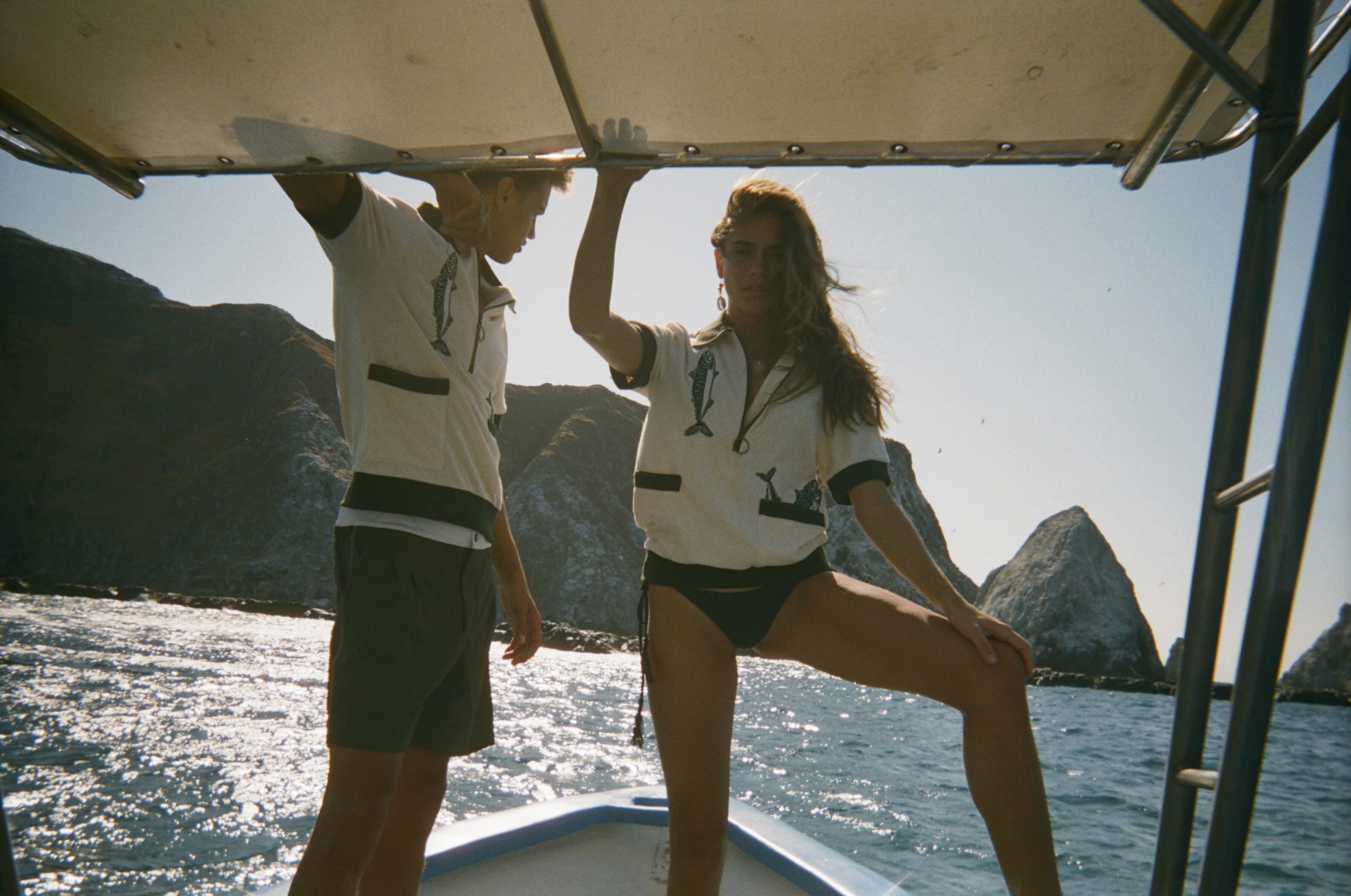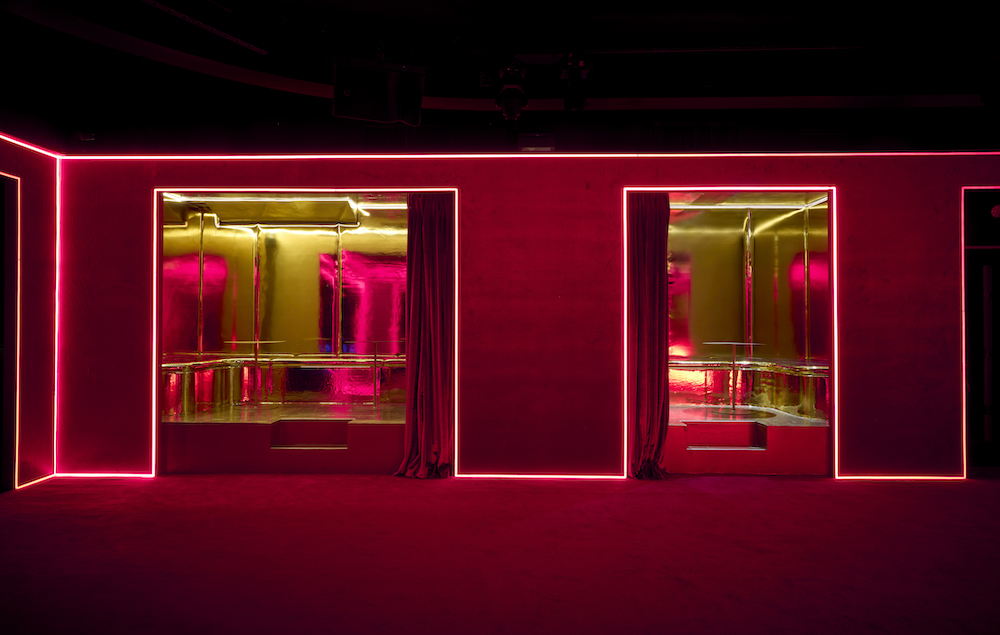Mike Sard and Chris Galasso have been friends since they were six years old. For their entire lives, they went to all the same schools—from kindergarten to college at Princeton University. After graduation, though, the duo parted ways to pursue different careers. Sard entered a profession in political risk management and Galasso took up a job in financial public relations, yet both continued to have one uncommon thing in common—a love of Hawaiian-style shirts.
While both appreciated the niche top for different reasons, they were aligned on how the modern market wasn’t perpetuating its greatness in nuanced ways. Today, as adults living in New York City, they realized there weren’t any Hawaiian shirts on the market that were refined, subtle, or contemporary. Certainly, none featured original artwork. So, they decided to change that.
In 2018, Sard and Glassao co-founded the unisex athleisure company Tombolo. They wanted to honor the Hawaiian shirt’s history and significance, influenced by many cultures, but ensure its design was considered for events beyond occasions or costumes. Hawaiian-style shirts of the past were ill-fitting and worn in jest; unisex garments weren’t particularly common; and casual menswear didn’t offer many bright patterns that were expressive, not kitschy.
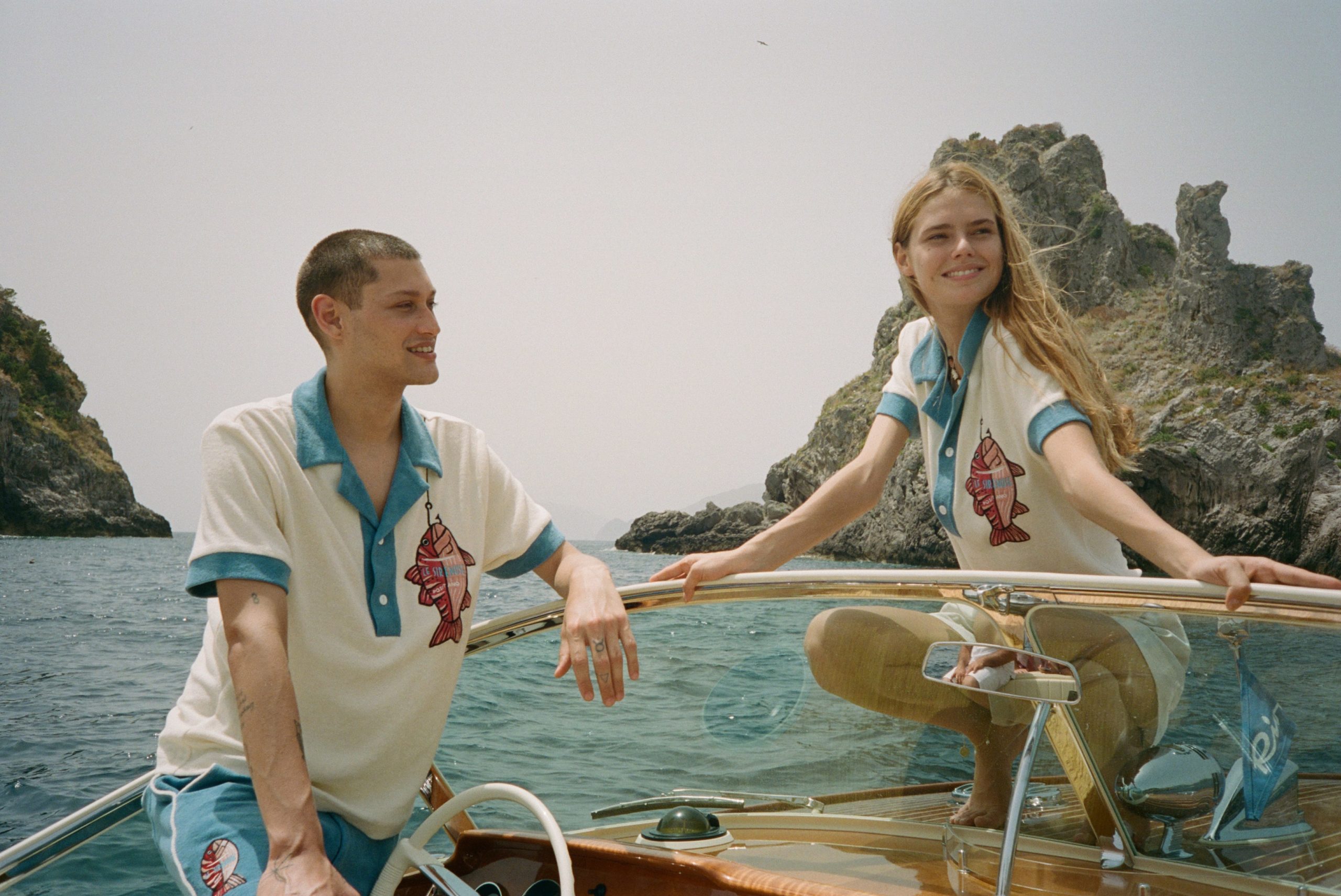
Courtesy of Tombolo.
Today, Tombolo works directly with artists to create original designs for an array of clothing and accessory styles. The Cabana top, arguably their most popular shirt style, is offered in terrycloth or linen, a half-zip or button-down closure, and is distinguished by a pronounced collar. Various patterns and featured artworks range from tigers, vines, and beers on the Crouching Tiger, Hidden Beverage top; popped champagne, and a flute in Big Brut style; pasta, clams, and a fork twirling it all on the Vognole! shirt; and fish made up of geometric shapes by the artist Rachel Sard on the Pescheria top. Others are created in collaboration with hotels like Le Sirenuse and Hôtel Magique.
One of the most important factors of Tombolo’s brand, however, is its dedication to philanthropy. At its inception, the company initiated a partnership with 1% for the Planet, donating one percent of all proceeds to environmental causes. Most recently, during the month of March, Tombolo donated all of its sales to the Arctic Ice Project (and 15 percent of proceeds thereafter), which helps protect Arctic ice and combat climate change. That month, the company also launched a made-to-order shirt with 100 percent of proceeds going to GlobalGiving‘s Ukraine Crisis Relief Fund, designed in the country’s colors. Last year, Tombolo debuted a clothing collaboration with the Department of Sanitation of New York (DSNY), donating 10 percent of all proceeds to the organization, which supports the essential sanitation workforce and advances DSNY’s enterprising zero-waste agenda.
Last summer, we joined the company for the opening of its boutique in Montauk, which was filled with garments and accessories and decorated with design pieces and taxidermy fish found on eBay. Since, the brand opened a second New York City location, too. Whitewall touched base on with the co-founders to hear how their company has grown from a love of Hawaiian tees to art-forward fashion with a philanthropic mission.

Courtesy of Tombolo.
WHITEWALL: Chris, I read in a previous interview that when you were younger, you were given a Hawaiian t-shirt by your dad. Mike, do you have a similar story that ties you back to the style? How did this spark the stat of a brand, paying homage to this type of shirt?
CHRIS GALASSO: But both of us, since we were kids, have been obsessed with Hawaiian shirts. As you read, my dad gave me one when I was like six, and it was my absolute prized possession, because, for men, especially back then, it wasn’t really that acceptable to wear bright prints. But Hawaiian shirts, you kind of got this like carte blanche and it was like, okay, go for it—dress in some crazy way, wear this art. So, we got super into them. We started collecting them. I think Mike has way more than me.
MIKE SARD: The irony is I have a huge collection that now is just stuffed and hidden in the closet because I want to stick to the Tombolo. But yeah, I think that they’re just the best canvas of self-expression. They used to be so whimsical and wonderful, and it just kind of got stale. They were also old, when you found vintage ones. The fit was off, and they were kind of falling apart. I think bringing it back with our skin was the original idea for Tombolo, which we’ve been noodling on for a very long time.
WW: The featured styles seem to be structured with details like zippers, pockets, and enunciated collars. How did you arrive at this style?
CG: This wasn’t a carefully thought-out evolution. We were playing around. I love these cabana shirts from the 40s and the 50s—the like terry cloth creations that you see on our website. So, we made one on a lark. And we made it kind of tongue in cheek and it was what’s called The Angler. It has these fish in the pockets, and another fish hanging off a hook over the shoulder. We made it with this great factory that does low minimums. I think we started with 24.
MS: This was fully Chris’s idea. He made a sample that I thought was so hideous. I like, “I don’t get it.” And he’s like, “No, give me one more chance!” I said, “Alright, you have one more chance—and then stop.” The first one looked like a little kid’s gone wrong. It looked awful. The second sample was pretty much The Angler as we see it today. All of a sudden, I was just like, “Oh, I see what you were going for!”
At the time, we had a pop-up on Bleecker Street, and we put them in the store. They sold out in an instant and we were just thrilled. We were like, “Oh my gosh! We’ve got something new on our hands that’s really moving.” And then on the business side, from the time we saw the gap in the market on the Hawaiian shirts, and were like, “Oh, no one’s doing creative stuff, pushing the envelope.” In the time between when we realized that and we started the business and got it running, the Hawaiian shirt market actually got crowded. A lot of people started doing pretty great Hawaiian shirts, and we found this other angle that was very much ours and figured out that it was a way to stand out from the crowd.
WW: How would you describe that angle?
CG: It’s really the cabana shirt. This terry cloth set that tells a story in an instant and is cheeky. Very much the rule that we go by is that if you look at it for a split second it should make you smile. And you should take away that story, which is the simplest story ever—like a fisherman whose pockets are stuffed with a bunch of fish, or an alligator that’s going to eat a flamingo. It’s all something that brings out a smile and is playful.
The grandiose way of describing what it’s doing is that it evokes nostalgia, and might say, “Oh, I think my grandpa owned that.” But it’s actually entirely new. So, it’s drawing on these references from a different time and place. But it really never did exist before, which is a fun niche.
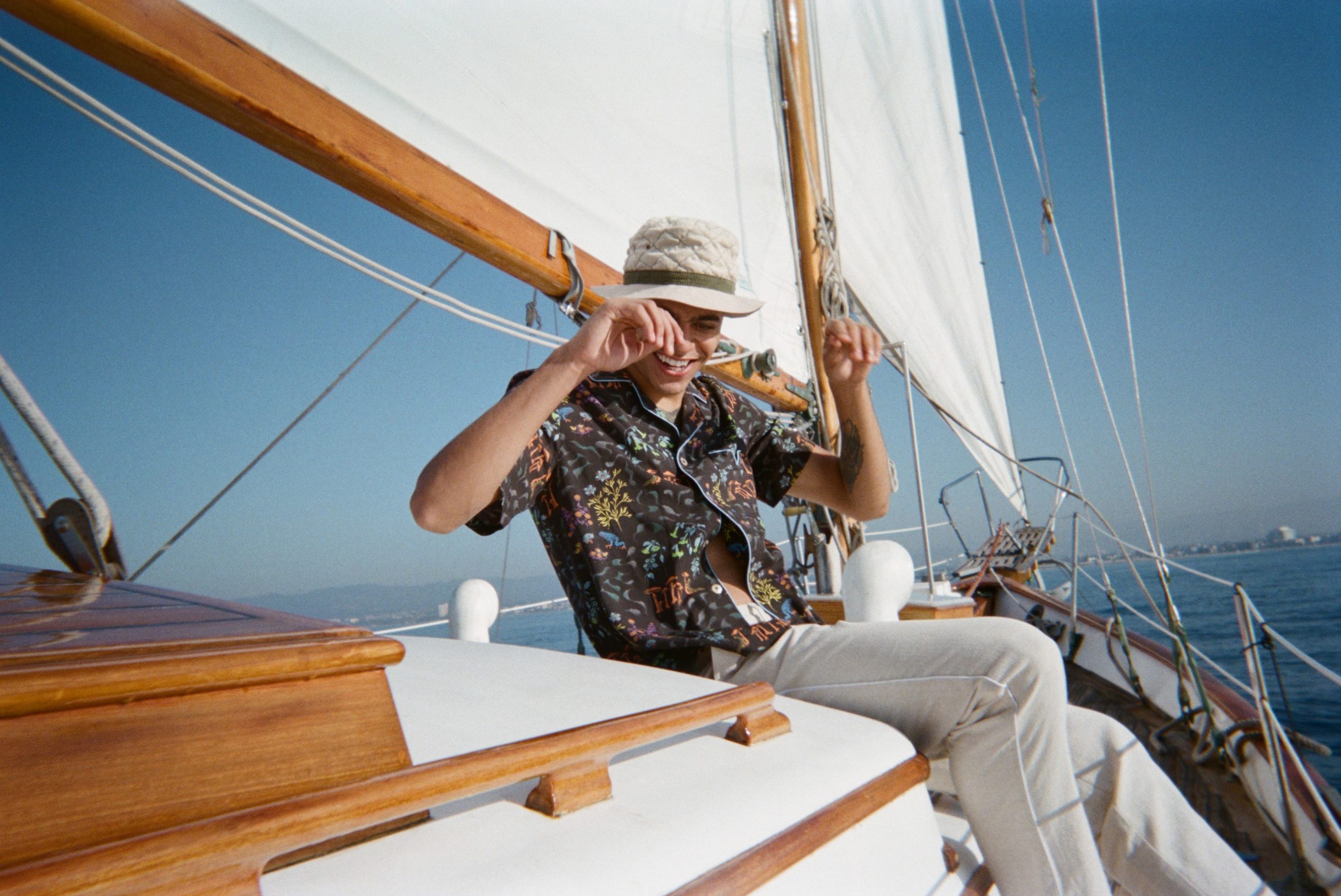
Courtesy of Tombolo.
WW: You mentioned wanting to tell a story through images, linking the customer to a new or old tale. How important is storytelling to the brand?
MS: I think it’s deeply important. And I think it actually is one of the hardest transitions career-wise, at least for me. My career was basically in writing it was, so, I wanted to write an essay about why we were doing everything we were doing. And it was just like, here’s the school jargon and not getting it down to just the essence of the story you’re truly trying to tell is so much harder than spitting out the very long huddle of what we were deliberating behind the scenes. So, this mix of show-not-tell is like, can the shirt really tell the story itself? If it can’t, we probably have more work to do aesthetically.
WW: Your most recent collaborative collection was with the Department of Sanitation New York (DSNY). Why was this an attractive partnership for Tombolo?
MS: As native New Yorkers, DSNY has been incepting us our whole lives. It’s this beautiful caduceus logo that’s on every street corner. You see it in weird contexts—coming into the city over the bridge, on the FDR and it’s just. It’s stunning when you take it out of the context of just a garbage truck. From an aesthetic standpoint, it’s always kind of been hiding in plain sight. But on top of that, the actual work they do is incredible. And it’s what keeps the city going. I think on both ends of the spectrum, it made a lot of sense for us.
CG: Mike deserves all the credit here because it really does hide in plain sight. If you grow up in New York, you’re so used to the forest green uniforms, the caduceus. You don’t even process what it is. It’s this iconic logo, but it just sort of lives in the background. I remember one day Mike and I were working out of our store during COVID. He came in and was like, “The DSNY caduceus is incredible. We have do something with them.” We put our intern at the time on it—you know, a crapshoot, like go on LinkedIn and see if you can get the DSNY to agree to do something with us, or at least have a call with us—and remarkably, it actually fell into place.
WW: Did the pandemic emphasize the idea of the need for a collaboration like this?
MS: It was absolutely enlightening learning what the DSNY actually does. It is fascinating and goes so far beyond the baseline of just clearing trash and recycling, like that alone is unbelievable in New York City. On top of that, it seems like whenever New York faces a crisis, it’s the DSNY that actually steps up and helps solve the issue. That can be something as mundane as a snowstorm. The DSNY does all the salt spreading in the snow clearing, but it gets much more acute when with things like 9/11. Like all the debris clearing and recovery of the remains was the DSNY, Superstorm Sandy, all that like clearing and rebuilding was the DSNY. And then during COVID, it became incredibly apparent because they did.
They’re an enormous, complex logistics company. And they stepped up to do all the meal delivery for people who couldn’t get out and get groceries who were like, isolated or had mobility issues. So they delivered a million meals a day for weeks on end, which is like, hard to fathom. So yeah, this entity that we took for granted, especially during COVID, we were blown away with what they do behind the scenes. They don’t really get celebrated that much for it.
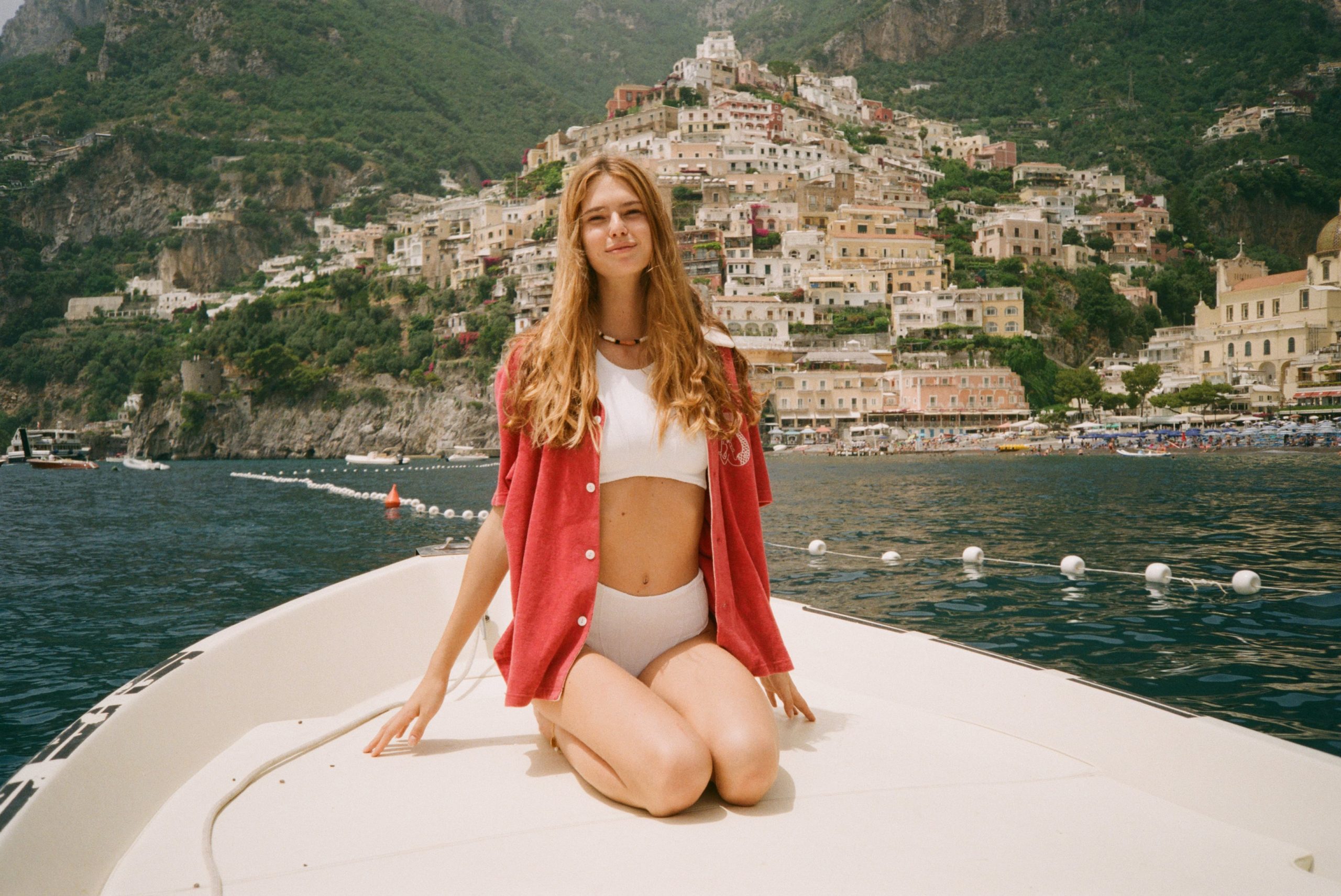
WW: Tell us a little bit about the design of the garments that we’re seeing now.
CG: A lot of it is centered around the Caduceus that we’ve been talking about so much because we really fell in love with this idea. So the caduceus—it’s that staff that’s wrapped by two serpents. And usually, you see it associated with hospitals and medical professionals. So we got interested, we were like, ‘Why is the, why is a garbage department using a caduceus as their logo?’ And we dug into it and we learned that it’s actually because the DSNY was started as really like a health department. Back in the 1800s, New York was filthy, and had hygiene-related diseases, like cholera, running rampant. The DSNY was brought in to solve a lot of those issues. They were viewed as you know, like heroes in the health department. So we were fascinated by this logo.
We looked at it through the ages, and we did a bunch of different iterations of it. For instance, the hat has the Caduceus was the one they used in the ’90s and early 2000s. The Cabana uses their modern Caduceus. The Hawaiian shirt uses the Caduceus that’s been featured on their flag that’s been around for over 50 years. We wanted to play around with the evolution of that there. And then we did a lot of course the like quintessential forest green. We also wanted to do at least one style in white as an homage to their old uniforms back in the day, which were all white because they were health professionals. They dressed like they were doctors. So in the late 1800s, that is what they wore. And then overall it was just as simple as taking their aesthetic hallmarks and recontextualizing them in our escape-wear lens. It was a strange, fun juxtaposition, and a nice way to celebrate the DSNY.
WW: 10 percent of the proceeds from the collaboration support the Sanitation Foundation and 10 percent also supports the city of New York via NYC & Company?
CG: The Sanitation Foundation is the one that’s particularly near and dear to our hearts. They’re the ones that we’ve been liaising with in the last two years. They exist to do two things. One is that they support the sanitation workers themselves. For instance, during COVID, when people were getting sick, they raised money to provide relief for the essential workers at the DSNY. The other thing they do, which is where we come in, is they bring in private-sector businesses that can help elevate awareness and raise money for the DSNY, which is where we came in. And then New York City and Co. is essentially, it’s like the licensing arm of the city of New York. It’s the licensing fee we pay that goes to them. And then they use that fee to promote the image of New York worldwide. It’s New York media code, basically. And as native New Yorkers, we’re all for it.
WW: Tombolo has collaborated with other artists for its prints and patterns, like Rachel Sard, Amber Victoria, among others. What type of illustrators and artists do you typically gravitate toward?
MS: It’s widely varied. I think the beauty of this simple Hawaiian shirt is that it can be just a blank canvas. You can take in just about any direction. What we really look for is great use of color, because at the end of the day, it has to be something you want to wear. Usually, we don’t go too abstract. We always come back to a relatability and desire to just lighten the mood and make people smile. Typically, I think we get that in a very simple, simplistic way which is like showing people a lobster.
Increasingly, as we’ve developed, I’ve moved away from simple block colors, homogenous colors, into a more painterly hand—more of a gradient effect. And a lot of the reason that evolution has happened is we’ve just gotten better at manufacturing and printing processes. Early on, it was like five colors maximum and we were trying to keep things simple. But now we’re really trying to like bring painterly canvases to life on a shirt.
The other like major evolution in how we collaborate with artists early on, we might we might have a vision and then try to push an artist into our vision and it’s, we’ve come like the like as far from that as we possibly can now it’s finding artists who, what they do best, we like and let them be themselves… give them some parameters and some guidelines of what we’ve seen work, but basically curate and unlock the style that we collaborated with them for.
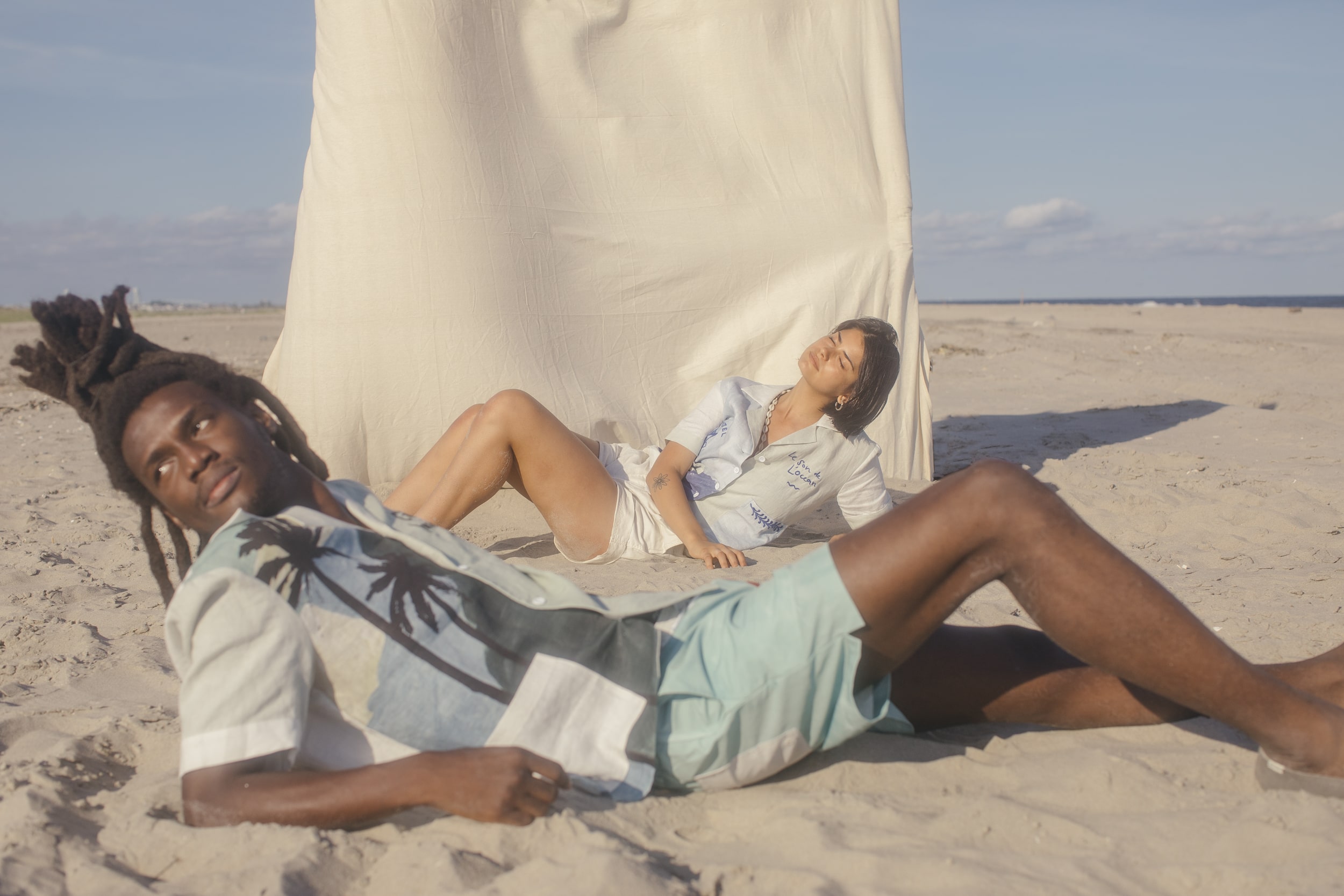
Courtesy of Tombolo.
WW: What is your relationship with art like? Do you go to art fairs or museums, even the New York classics like the Met Museum?
MS: Yeah, I went and saw the Winslow Homer show, which was incredible, and then also saw the Charles Ray stuff. I don’t think I’ve been by any means an art history buff or anything like that. I just enjoy it and find it super useful for Tombolo for inspirational purposes. The other thing I would mention is the greatest art store on Earth is eBay. I’m constantly trolling eBay for new artwork from my apartment.
WW: DSNY isn’t the first time that you guys have dedicated yourselves to donating proceeds. In the past, you’ve organized funds for 1% for the planet, $1 for the people, City Harvest, Riverkeeper, Oceanic Global, and even most recently, the Ukraine Crisis Relief Fund. What’s your relationship between fashion and philanthropy? Why is it so important for Tombolo to get behind?
CG: It starts on the environmental side, where the realization that the most sustainable thing you can do is not exist at all. No garment is truly sustainable. And anyone who’s kind of touting how they’re saving the world, it’s, it’s, I think they’re coming at it from the wrong end. It comes from a place of humility of, “How can we lessen the impact?” That’s sort of our North Star.
In terms of 1%, for the planet, and $1 for the people, we just very early on thought to make these commitments. It’s just the two of us answering to ourselves—we don’t have many people to answer to—and the dollar figures aren’t that bad yet. So we said to just commit now, an easy handshake, and put it on the website and post it on Instagram, and then we’re, we’re locked into this forever. It’ll be great. It’s a lot harder to steer the ship once the ship has gotten bigger. So from early on, we definitely wanted to integrate that.
In terms of the relationship between fashion and philanthropy, I think the idea of giving back is crucial from the standpoint of making sure that what we’re doing actually can minimize the environmental impact. We can bring a smile to people’s faces and be irreverent and playful, but there should be something serious and some backbone behind that. I think a lot of brands that are founded on some sort of social responsibility, commitment, or environmental awareness and sustainability tend to be serious. I think it’s nice to just be a brand that’s totally silly and irreverent, but also has that commitment underlying it. Those commitments don’t have to mean you’re a boring brand, or a very serious brand. You can still make people smile.


